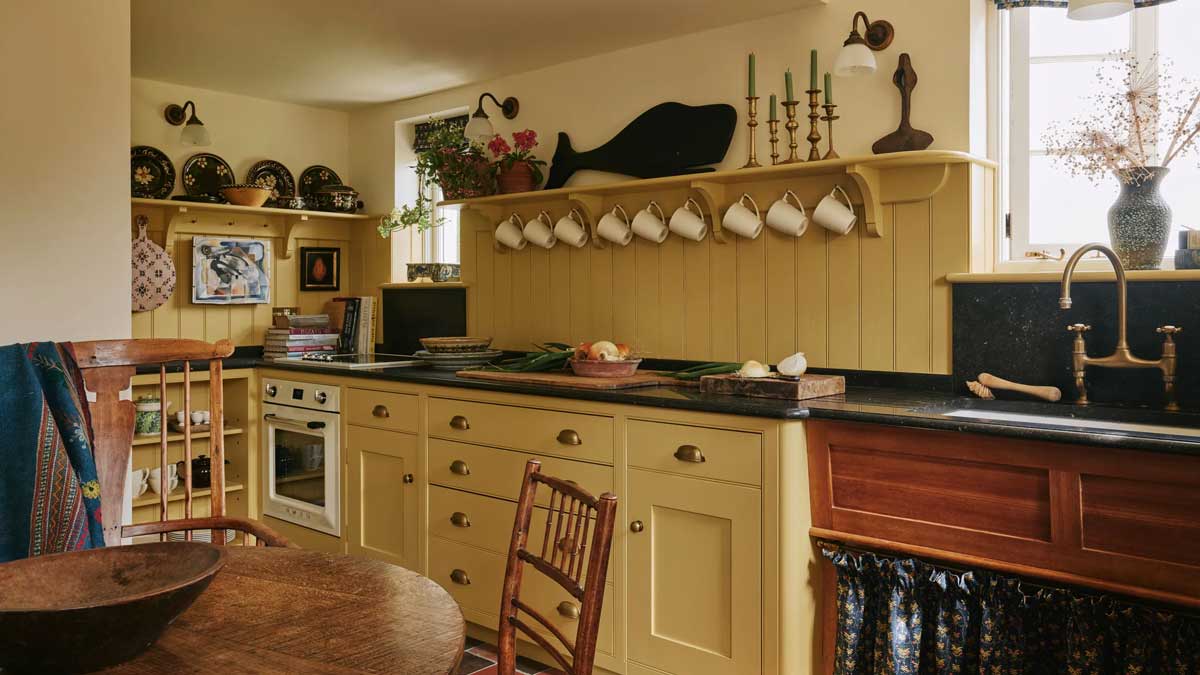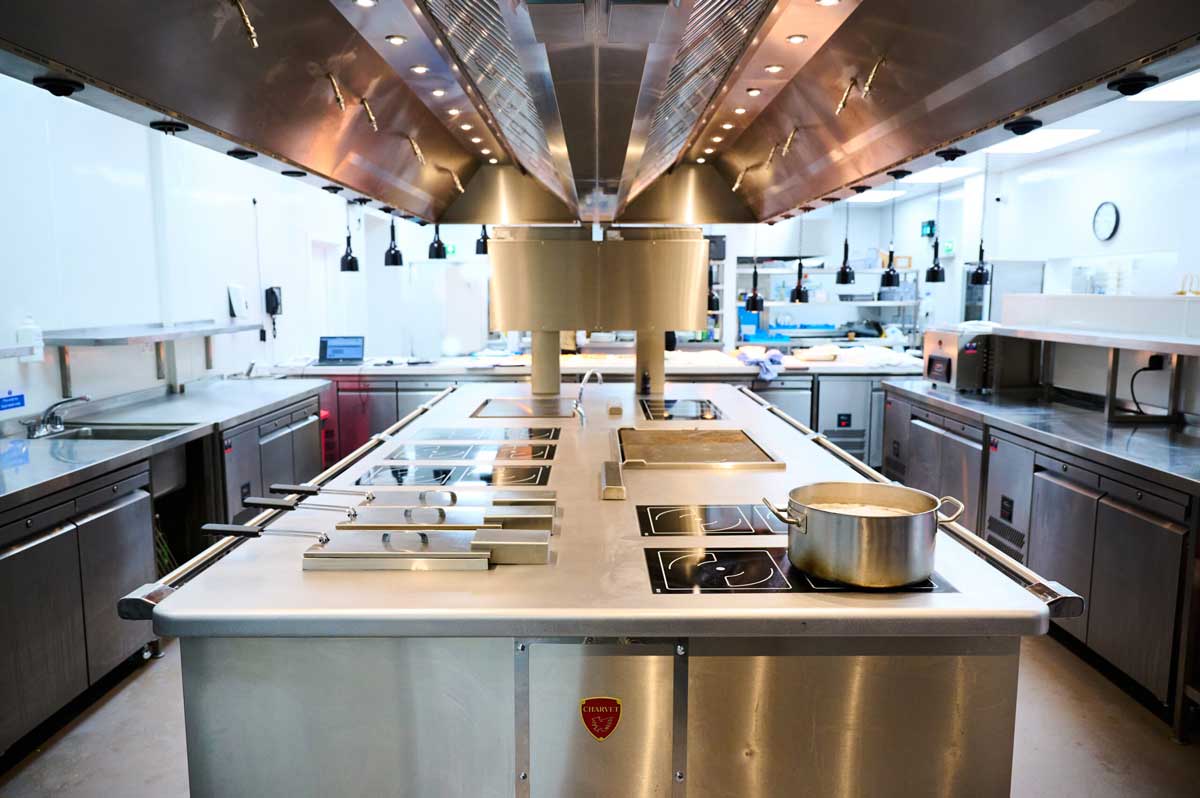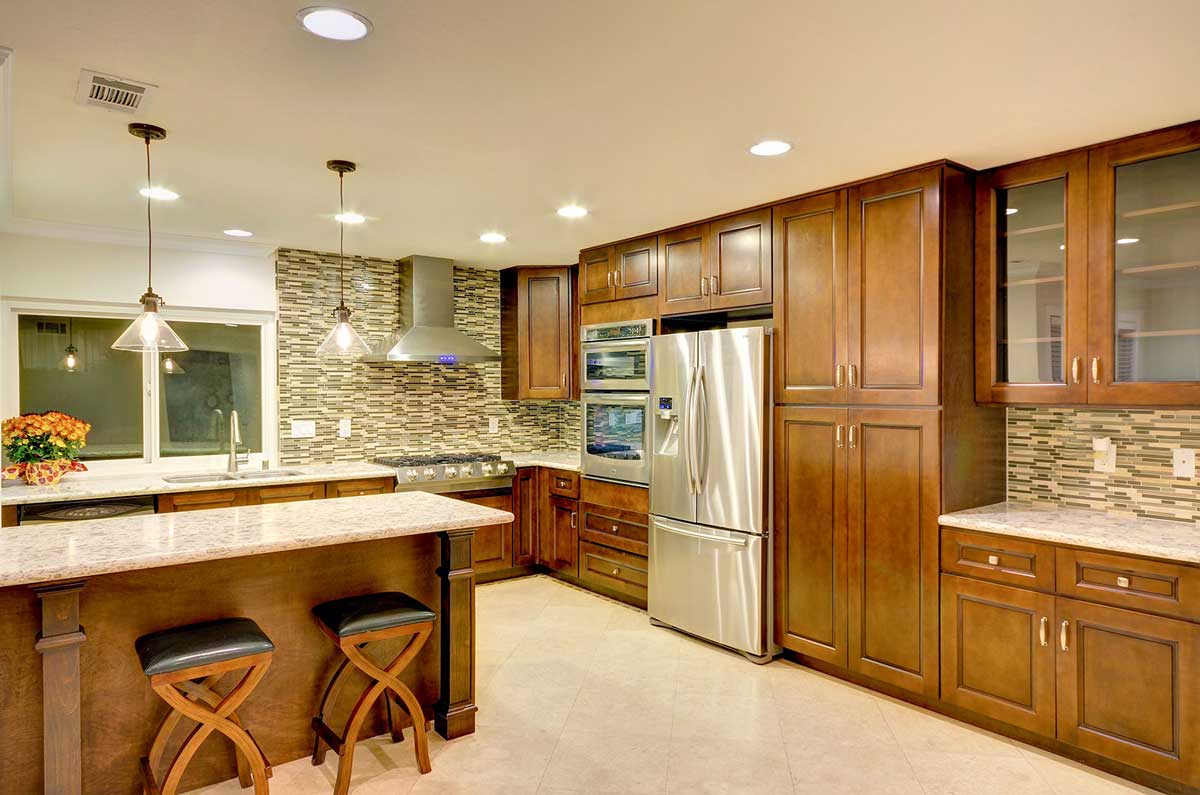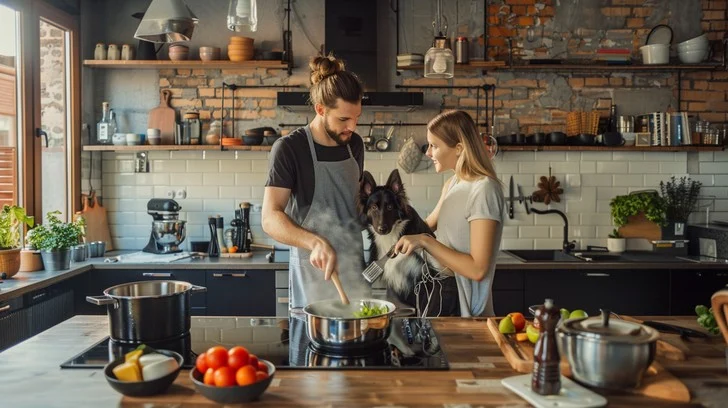Foundations of a Greener Table
Introduction: Why Sustainable Dining Matters More Than Ever
As we step into 2025, sustainability transcends buzzwords to become a cornerstone of mindful living. Nowhere is this shift more palpable than in how we approach dining—the heart of our homes and social lives. Sustainable dining means choosing foods, materials, and practices that reduce environmental impact while enriching the sensory and emotional experience of sharing meals.
Globally, food production accounts for approximately 26% of greenhouse gas emissions, with significant water use and land degradation. Single-use plastics and waste from dining services further exacerbate environmental stress. In response, households and dining establishments alike are adopting green strategies that honor the planet and future generations.
This article explores how sustainable dining is revolutionizing the way we eat, design our tables, and entertain guests in 2025. From farm-to-table choices to cutting-edge materials and innovative technologies, we’ll cover it all.
1. The Core Principles of Sustainable Dining
a. Local and Seasonal Sourcing
Eating with the seasons and sourcing ingredients locally reduces transportation emissions, supports community farmers, and ensures fresher, more nutritious food. 2025 diners prioritize farmers’ markets, community-supported agriculture (CSA), and on-site gardens to achieve this.
b. Minimizing Food Waste
Rethinking portions, creatively using leftovers, and composting food scraps are now essential habits. Smart kitchen appliances help track food inventories and suggest recipes, minimizing spoilage.
c. Eco-Friendly Materials
From plates to napkins, the dining setup embraces biodegradable, reusable, or recycled materials. Bamboo, wheat straw, recycled glass, and compostable bioplastics dominate tableware selections.
d. Water and Energy Efficiency
Using energy-efficient appliances, such as induction cooktops and smart ovens, reduces power consumption. Low-flow faucets and mindful water use during cleaning further conserve resources.
e. Ethical Consumption
Many diners are informed about fair trade, animal welfare, and the carbon footprint of products, leading to conscious choices such as plant-based proteins and sustainably harvested seafood.
2. Farm-to-Table: The Heart of Sustainable Menus
The farm-to-table philosophy—connecting diners directly to the source of their food—has matured into a sophisticated movement. 2025’s dining experiences celebrate transparency, traceability, and community engagement.
-
Hyper-Local Farming: Urban micro-farms, rooftop gardens, and vertical farming innovations bring food production literally to the dining table’s doorstep.
-
Seasonal Menu Cycles: Menus shift dynamically with the growing seasons, inspiring creativity and reducing reliance on out-of-season imports.
-
Partnerships with Small Producers: Chefs and home cooks alike favor partnerships with artisanal producers to guarantee freshness, quality, and sustainable practices.

Max-Rollitt-Interiors-Garden-Cottage-Kitchen-by-Chris-Horwood-1
3. Designing the Sustainable Table
Dining extends beyond food. The physical table setting and dining environment significantly influence sustainability.
-
Materials That Matter: 2025 sees a surge in handcrafted tableware made from reclaimed wood, recycled ceramics, and natural fibers like hemp and jute.
-
Zero-Waste Table Settings: Embracing cloth napkins, washable placemats, and long-lasting cutlery eliminates single-use disposables.
-
Natural Aesthetic: Earth tones, organic shapes, and minimalist designs reflect an eco-conscious aesthetic that connects diners with nature.
4. Waste Not, Want Not: Revolutionizing Food Waste Management
Food waste is one of the biggest challenges in sustainable dining. Innovative solutions in 2025 include:
-
Smart Refrigerators and Pantries: Equipped with sensors and AI to monitor expiry dates and suggest recipes.
-
Composting at Home and Community Levels: Advanced home composters accelerate organic waste breakdown, reducing landfill contributions.
-
Donation Networks: Apps connect excess food from events and restaurants to local charities and shelters, cutting down waste.
5. The Role of Technology in Sustainable Dining
Technology is a powerful ally:
-
Supply Chain Transparency: Blockchain and IoT provide verifiable provenance data for ingredients.
-
Smart Appliances: Reduce energy and water waste during cooking and cleaning.
-
Digital Menus & Ordering: Restaurants minimize paper waste and optimize ingredient purchasing based on real-time demand.
Table: Environmental Impact Comparison of Dining Practices
| Practice | Estimated Carbon Footprint Reduction | Water Savings | Waste Reduction Impact |
|---|---|---|---|
| Local & Seasonal Sourcing | 20-30% | High | Moderate |
| Plant-Forward Menus | 40-50% | Very High | High |
| Biodegradable Tableware | 15-25% | Low | Very High |
| Smart Food Waste Tech | 25-35% | Moderate | Very High |
| Energy-Efficient Cooking | 10-20% | Moderate | Low |

Mastering Kitchen Design: Space, Style, and Smart Appliances for Your Home
Materials, Innovation & Real-World Inspirations
6. Cutting-Edge Sustainable Materials Transforming Dining
The choice of materials used in dining—from tableware to furniture—is pivotal in reducing environmental impact. In 2025, several innovative, eco-friendly materials have risen to prominence, offering both elegance and sustainability.
a. Bamboo and Fast-Growing Woods
Bamboo remains a superstar in sustainable design due to its rapid renewability and durability. It’s used for plates, utensils, furniture, and even flooring. New treatments enhance its water resistance and lifespan, making it ideal for dining settings.
b. Wheat Straw Bioplastics
Derived from agricultural waste, wheat straw bioplastics serve as an alternative to conventional plastic cutlery and containers. These biodegradable materials decompose quickly without leaving toxic residues.
c. Recycled Glass and Ceramics
Recycled glass is repurposed into stunning plates, bowls, and drinkware. Similarly, ceramics made from reclaimed clay and fired with energy-efficient kilns offer a zero-waste solution with artisanal charm.
d. Natural Fiber Textiles
Table linens and napkins crafted from hemp, organic cotton, or jute are preferred for their low water footprint and biodegradability. These fabrics also provide tactile warmth and visual softness.
7. Innovations in Cooking & Food Preparation
Modern sustainable dining isn’t just about what’s on the table, but how food is prepared. Advances in cooking technology minimize waste, energy use, and environmental footprint.
a. Induction and Steam Cooking
Induction cooktops are highly energy-efficient, providing precise heat control while reducing cooking time. Steam ovens preserve nutrients and flavors, often using less energy and water.
b. Sous Vide Precision
This method uses controlled low temperatures to cook food evenly, reducing overcooking and waste. It also allows for batch cooking and reheating without compromising quality.
c. Food Preservation Technologies
Vacuum sealing, natural fermentation, and smart refrigeration extend shelf life, minimizing food spoilage. IoT sensors now help monitor conditions remotely.
d. Solar-Powered Appliances
Innovative solar ovens and dehydrators are becoming practical for home use, harnessing renewable energy to cook or preserve foods with zero emissions.
8. Case Studies: Leading Sustainable Dining Spaces
To inspire your sustainable dining journey, here are real-world examples of venues and homes embodying these principles.
a. The Green Table, New York City
This farm-to-table restaurant sources 90% of its ingredients from local urban farms, employs composting onsite, and features biodegradable packaging. Their dining room boasts furniture made from reclaimed wood and lighting powered by solar panels.
b. EcoChef Residence, Portland
A private home emphasizing sustainable dining, the EcoChef Residence uses smart kitchen tech to plan meals and reduce waste, features a vertical herb garden supplying fresh greens year-round, and uses recycled glass dinnerware paired with hemp linens.
c. Terra Dine, Copenhagen
This progressive eatery implements blockchain technology for full transparency of ingredient sourcing, educates diners via augmented reality menus about environmental impact, and serves only seasonal menus that change weekly.

Dining Room Renaissance: 2025 Trends Redefining How We Eat, Gather & Design
9. Sustainable Beverage Trends in 2025
Dining is incomplete without beverages, and 2025 sees green innovations here too.
-
Organic, Biodynamic Wines & Spirits: Focus on chemical-free cultivation and minimal intervention winemaking.
-
Plant-Based Milks & Ferments: Almond, oat, and hemp milks gain further popularity; kombucha and other fermented drinks support gut health.
-
Smart Beverage Dispensers: Reduce waste with precise pouring, track inventory, and suggest eco-conscious pairings.
10. The Circular Economy & Dining
The circular economy model encourages reuse and regeneration. In dining, this translates to:
-
Upcycled Ingredients: Using parts of produce normally discarded (stems, peels) in stocks or creative dishes.
-
Reusable Serveware Programs: Restaurants partner with suppliers for returnable containers and utensils.
-
Waste-to-Energy Initiatives: Food scraps converted into biogas or compost powering local farms or buildings.
Table: Sustainable Materials Comparison for Dining Applications
| Material | Renewability | Durability | Biodegradability | Typical Applications | Cost Range |
|---|---|---|---|---|---|
| Bamboo | Very High | High | Yes | Plates, furniture, utensils | $10 – $150 per item |
| Wheat Straw Bioplastics | High | Moderate | Yes | Cutlery, containers | $5 – $30 per pack |
| Recycled Glass | Moderate | High | Yes (recyclable) | Drinkware, plates | $20 – $100 per set |
| Organic Cotton Textiles | High | Moderate | Yes | Napkins, tablecloths | $15 – $80 per piece |
| Hemp | Very High | High | Yes | Textiles, placemats | $20 – $100 per piece |
Hosting, Menus & The Future of Dining Culture
11. Eco-Friendly Hosting: Setting the Tone for Sustainable Gatherings
Hosting sustainably means making deliberate choices that minimize environmental impact while maximizing guest comfort and enjoyment.
a. Zero-Waste Invitations & Communication
Digital invitations, RSVPs, and event management apps reduce paper waste. For printed materials, recycled paper with soy-based inks are preferred.
b. Sustainable Table Settings
Using reusable cloth napkins, natural fiber placemats, and durable dinnerware reduces disposable waste. Centerpieces use fresh or potted plants rather than cut flowers to extend lifespan.
c. Energy-Efficient Lighting & Ambience
Warm LED lighting with dimmers creates cozy atmospheres while consuming minimal electricity. Solar lanterns are increasingly popular for outdoor dining.
d. Waste Management at Events
Clear signage for recycling and compost bins encourages proper disposal. Leftover food can be packaged for guests or donated to local food banks.
12. Designing Menus for Health & Environmental Impact
Sustainable dining also centers on what’s on the plate—menus designed for nutritional wellness and environmental responsibility.
a. Plant-Forward Plates
Menus emphasize vegetables, legumes, and whole grains, with meat as a smaller, occasional component. This shift reduces carbon footprint and supports health.
b. Seasonal & Local Sourcing
Using ingredients at peak freshness reduces transportation emissions and supports local farmers.
c. Minimizing Food Waste in Preparation
Chefs creatively use whole ingredients—peels, stems, and scraps—to make stocks, sauces, and garnishes, cutting waste.
d. Allergy & Dietary Considerations
Menus include gluten-free, vegan, and allergen-aware options to serve diverse guests sustainably.

small-kitchen-ideas-lead-home
13. Wellness & Sustainability: The Perfect Pair
Dining that nurtures the body aligns naturally with sustainable practices.
-
Organic & Pesticide-Free Ingredients: Reducing chemical exposure benefits both ecosystems and health.
-
Mindful Eating Experiences: Slowing down to savor food, reducing overeating and waste.
-
Fermented & Probiotic Foods: Support digestion and reduce reliance on processed supplements.
-
Hydration with Eco-Friendly Options: Filtered water stations replace bottled water, reducing plastic waste.
14. Technology Enhancing Sustainable Dining Experiences
Smart technology continues to elevate eco-friendly dining.
-
AI Menu Planning: Algorithms optimize ingredient use, reduce spoilage, and customize meals based on dietary needs.
-
Waste Tracking Sensors: Devices monitor food waste volume and types to guide improvements.
-
Augmented Reality (AR) Education: Interactive menus inform diners about sustainability practices and ingredient origins.
15. Cultural Shifts: Redefining How We Dine Together
Sustainable dining reflects broader cultural transformations in 2025.
-
Community-Centric Meals: Shared tables, potlucks, and communal gardens strengthen social bonds and reduce individual waste.
-
Slow Food Movement Revival: Embracing traditional, seasonal cooking with respect for nature’s rhythms.
-
Global Fusion with Local Roots: Diverse cuisines adapted to local, sustainable ingredients create new traditions.
-
Transparency & Trust: Diners increasingly demand clear sourcing information and ethical practices from restaurants and brands.
FAQ: Sustainable Dining in 2025
Q1: Why is sustainable dining important today?
Sustainable dining helps combat climate change, reduces waste, supports local economies, and promotes healthier eating habits, making it essential for a thriving planet and people.
Q2: How can I make my home dining more eco-friendly?
Focus on local, seasonal ingredients, reusable tableware, composting food scraps, and reducing energy use during cooking.
Q3: What are some cost-effective sustainable dining tips?
Plan meals to avoid waste, buy in bulk, choose plant-based proteins, and use leftovers creatively.
Q4: Where can I find sustainable dining products?
Look for certified eco-friendly brands online or at local markets, focusing on transparency and materials.
Q5: When is the best time to transition to sustainable dining?
Now! Every meal is an opportunity to make more conscious choices.

Mastering Kitchen Design: Space, Style, and Smart Appliances for Your Home
Conclusion
In 2025, sustainable dining has evolved into an art form blending environmental stewardship, health consciousness, and cultural richness. From selecting cutting-edge materials and adopting innovative cooking technologies, to designing mindful menus and hosting eco-friendly gatherings, the modern dining experience embraces a holistic approach to nurturing both people and planet. As we continue to innovate and shift culturally, sustainable dining stands not only as a trend but as a vital lifestyle, redefining how we eat, gather, and celebrate in harmony with nature.
Backlinks & References
-
Sustainable Dining Practices – Environmental Protection Agency (EPA)
-
Zero Waste Home Dining Tips – Zero Waste International Alliance


